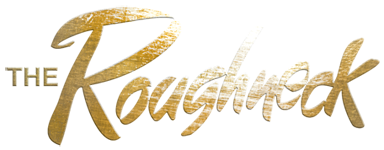Breakthrough in Lowering Costs in Lifting Oil, Light or Heavy

“There’s a way to do it better – find it.” Thomas Edison (1847 – 1931).
In what’s being called a ‘game-changer,’ the upstream oil industry now has access to the new technological advanced wellhead polished rod with the world’s hardest, densest, and highest melt point metal. After more than five years of rigid oilfield rod pump testing and field reporting, the Adoil W99 tungsten electroplated polished rods have shown real savings in lifting cost on many wellsites trials.
Less time and labour in stuffing box packing replacement (due to density, non-porosity, and hardness) the W99 has a low co-efficiency to friction and can be used, adjusted, and stroked anywhere in its 100 per cent length. So setting the pump travelling position gives longer life to the plunger and barrel. The W99’s lack of porosity prevents, grit, powder sand, and corrosive chemicals, to attach and inhibit the rod.
Longevity of the W99 tungsten rods and plus longer stuffing box packing life, has reduced lease staining and ground water issues, less oil production shut-in, and field disruption due to permits, BOP (blow-out preventer) usage, and site clean-up cost, often followed by mobile steam-cleaning.
Adoil’s Marty Matthews, took Edison’s mantra to heart. “I knew there must be a new tech metallurgical answer to upgrading wellhead rod pump equipment,” he says. Traveling to the US, Europe, and the Far East helped in following the field trials, analysis, and lab testing. Acquiring the Canadian and Mexican distribution for the Tungsten W99 Polished rods was the final step.
Matthews got his start as a quality controller with Canada’s largest pumping unit maker, Legrand Ind. Within a decade, that led to the startup of Adoil, in 1986, providing on-site training courses throughout Western Canada in rotating surface equipment and including QC inspection of oil well sites.
A large oil producer, a major client, wanted to ensure the utmost environmental protection at its Chinchaga field, in northwestern Alberta. It had many remote pumpjack leases. There was a herd of woodland caribou grazing in the area and the client didn’t want them ingesting any produced fluids. “I decided there must be a better way to protect the region with an easy to use containment system with emergency shutdown in the event of a serious packing failure, hence Adoil’s TITAN Enviro system came to life.” As a believer of Investing in Western Canada, today Matthews manufactures the only wellhead environmental containment unit made in Western Canada.
During the past decade’s most oil companies were led to believe a new stuffing box was the way to arrest oil seepage and ground staining. With years of oilfield inspections, Matthews noticed that many of these various designs of stuffing boxes (some costing over $5,000) were not living up to the antipollution sales talk. After all, the stuffing box is just a container for the rod seal pack, if there is a worn or torn packing, leakage occurs and that leads to a decrease in lower internal well pressure. Oil takes the path of least resistance, packed wax, salt, and slug with worn seals in any stuffing box rarely perform as told and that includes most flapper valves. Most of these are hard to work on and expensive to service.
The answer to a long stuffing box seal life is in the science of the metal polished rod surface and quality of packing seals. At a power of 100X magnification, metal rods in use today look like a car door surface on a rifle shooting range. Porosity at the surface is evident (small cavities). In the past, a spray coat helped to cover the porosity but the best applications involved extreme heat and that reduced the metal properties of the rod. A sprayed coat was only applied to the rod stroke area and rod clamping there was ill advised. The spray coat was often (hair) cracked, which cut the soft wiping seals. Oil leaks!
Tungsten’s periodic table symbol is ‘W.’ It’s the most solid, hard metal, and when polished, has the best co-efficiency to friction of metals. (Interesting fact, before Mr. GE, Thomas Edison, lit up the whole world with tungsten, its only use was faking gold brick bullion.)
Renowned, Element Laboratories, headquartered in California and “specializing in materials testing and product analysis for industries where failure is not an option,” namely the U.S. Defense Department (including top-secret military, navy, and army equipment), tested the Tungsten W99 electroplated rod and deemed it remarkable for its hardness and lack of porosity.
Tungsten’s high melting point of 3422-degree C. is the reason for usage in electric ovens, heat furnaces, and a thousand other important applications. Unlike most metals, tungsten was not formed by a nuclear fusion process in the galaxy, but originates only by neutron or proton absorption of already bigger nuclei, says the International Tungsten Industry Association. “Massive stars end in a supernova explosion, whereby certain amounts of their mass were distributed to the surrounding space, including where tungsten atoms are formed.”
Initial sales and interest have been excellent with the company’s 22’-26’-30’ W99 Tungsten rods. “It is a major breakthrough with a quick to long-term reason for lower lifting cost and increased field production,” Matthews says proudly. “The W99 rods are twice as hard as the stainless N50 rods, and the N50 are more expensive than our W99 rods. I’ve talked to field foremen and I’m told the field operators like the fact, packing seal changes are down due to installing the Tungsten W99 rods.”
Will Adoil’s W99 rods be a game-changer for the oilpatch? Matthews believes “this is a better way – and he’s found it.”
#Adoil #AdoilInc #w99 #w99PolishedRods #Tungsten #oil #oilpatch #drilling #Alberta #Canada






